Why use a lens hood?
If you own an interchangeable lens camera, you probably will have noticed that a lot of lenses sold for these cameras come with a plastic lens hood included. And for those lenses that don't include a lens hood, there are a wide variety of aftermarket designs available that you can purchase to add to your lens.
In this article we'll look at the benefits of using a lens hood, the different types of hood available, and also some disadvantages of hoods.
Preventing Lens Flare
The main purpose of a lens hood is to reduce the possibility of lens flare. Lens flare typically shows up in an image in the form of colored blobs, or as an overall reduction in contrast. It is caused by light being scattered / bounced around inside the lens. You can read more about it here: Lens Flare.
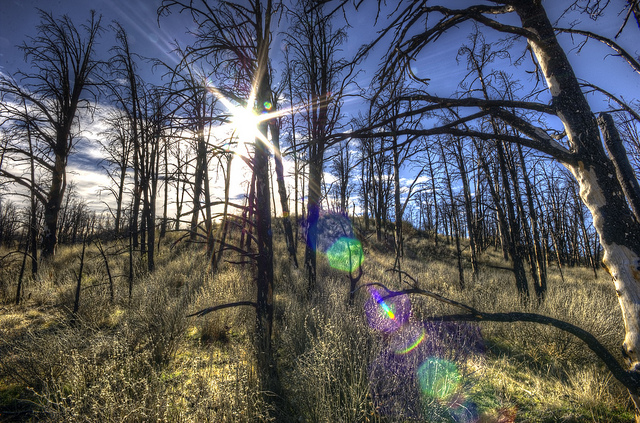
Forest flare by Neil Kremer on Flickr (licensed CC-BY-ND) - example of 'colored blobs' lens flare
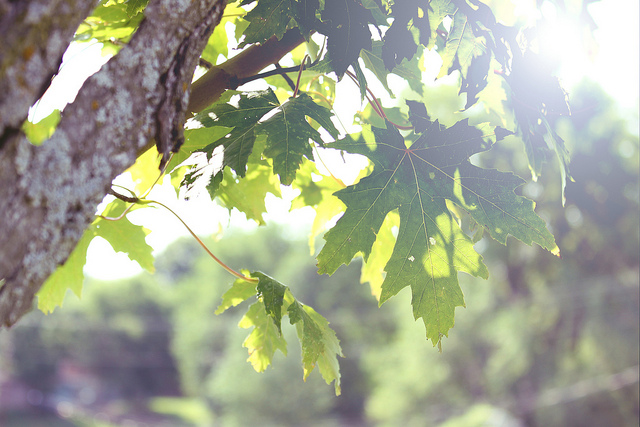
Untitled by Dávid Sterbik on Flickr (licensed CC-BY) - example of contrast reducing veiling flare
While lens flare can sometimes add to an image (like in the examples above), often lens flare is not wanted in images. So using a hood to reduce its occurrence when not wanted is a good idea. And if you do want flare for a certain image, you can always just remove the hood.
A hood won't have any effect if you are shooting into the sun, where the sun appears in the image. But it does prevent flare when the sun (or any light source) is outside the frame, where light would be hitting the front of the lens at an angle. The hood protects the lens by blocking light from more oblique angles, so it can't enter the lens and create flare.
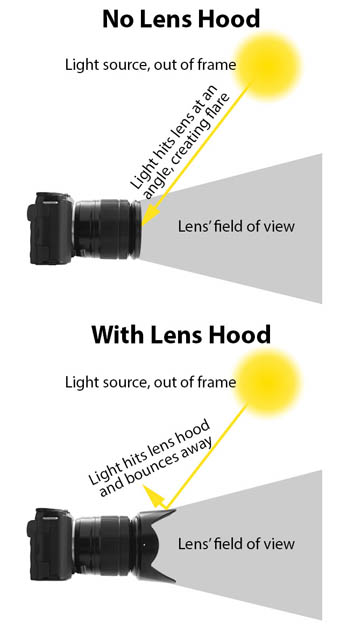
How a lens hood blocks stray light rays to reduce lens flare
Protecting the lens
Another benefit of a lens hood is that it protects the glass at the front of the lens from knocks and scratches. If you accidentally brush your camera against a wall, it is just the hood that will get scratched, not the lens glass.
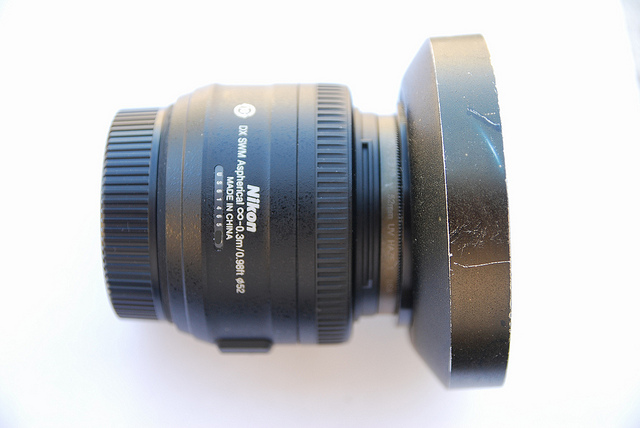
Nikkor 35mm ƒ 1.8 DX by Paul Sullivan on Flickr (licensed CC-BY-ND) - lens hood has had a few bumps and knocks, but protected the lens
Many people prefer to use a UV filter to protect their lens, but in most cases this is not as good as a lens hood. A UV filter has the possibility of degrading the image quality and increasing lens flare.
If you accidentally brush your camera against a wall with a UV filter protecting the lens, the filter will get scratched. This means you have to remove the filter and replace it with another one to keep your lens protected and avoid taking photos through a scratched filter (which might give some interesting effects). Whereas with a lens hood, it doesn't matter if the hood gets a few scratches.
One way in which a hood won't protect your lens though, is if something is aimed right at the front of the glass. For example, if you're photographing a motocross race from close-range, mud could fly straight onto the front of the lens. The hood provides protection from light and physical objects hitting the glass at an angle, but not from straight on.
Types of Lens hood - Petal vs. Tube
There are two main designs of lens hood you're likely to come across - Petal (also called Tulip), and Tube. A petal lens hood has petal shaped protrusions at the top, bottom, left, and right.
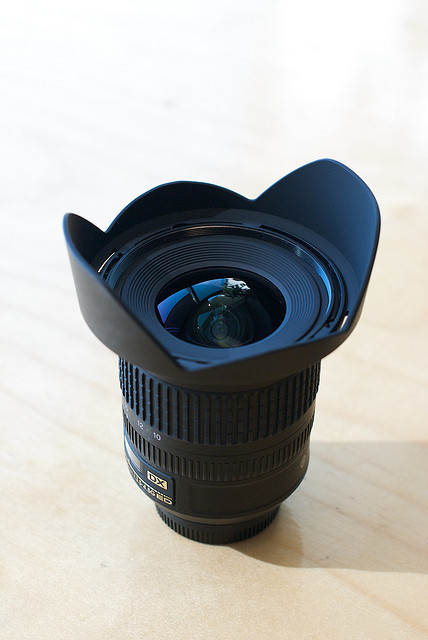
Hooded by Daniel Stockman on Flickr (licensed CC-BY-SA)
While a tube lens hood is just shaped like a circular tube.
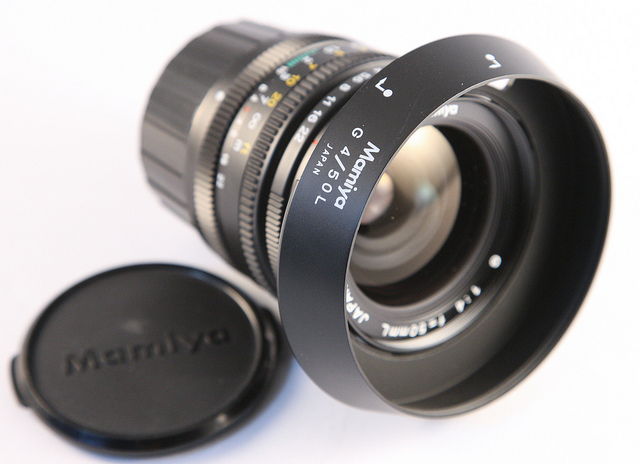
0228 Mamiya 6 50mm lens 2 by Zebrio on Flickr (licensed CC-BY-SA)
The petal lens hood is designed to offer optimal coverage for the way camera sensors are designed - the sensors are rectangular and longer than they are tall. Thus the hood has smaller petals on the left and right, and larger petals at the top and bottom. This blocks as much non-image light as possible from hitting the lens, while still keeping the lens hood out of the actual image frame.
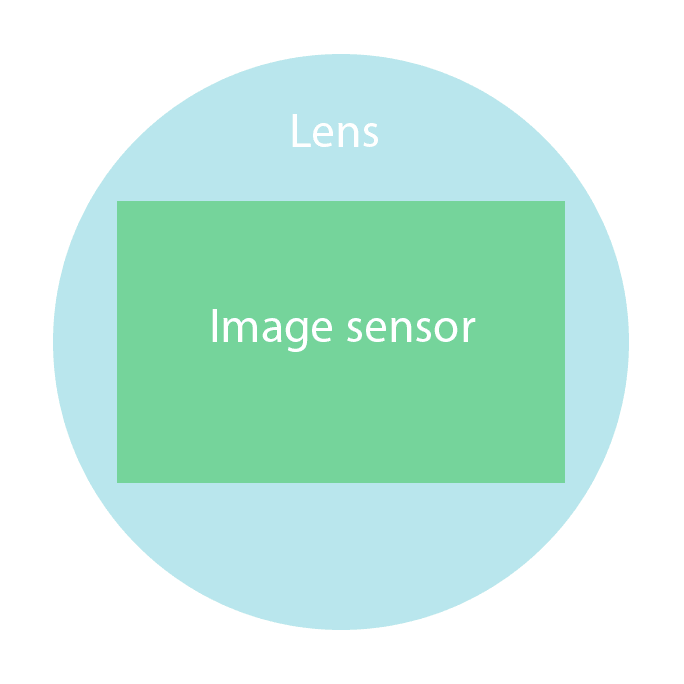
When you think of how a rectangular sensor relates to the circular lens, you can see how a petal type design is the most efficient at blocking stray light without causing vignetting
You're much more likely to find petal type lens hoods included with or sold for wide-angle lenses. This is because with a wide angle lens and a tube lens hood you would need to have a very small hood to avoid the hood infringing at the corners of the image. And a small hood would not be very effective. The petal type hood avoids infringing at the corners of the image while also offering a reasonable amount of protection from flare.
Tube style hoods are often included with or sold for telephoto lenses. For these lenses the angle of view is very small, and so the hood can be quite long - using a petal design would have little advantage.
Rubber lens hoods are only available in the tube type design, but have a couple of advantages and drawbacks. They are produced with screw threads, and screw onto the front of the lens like a filter. This means they are generic and can be used on any lens with the correct filter size (or also with different sizes via stepping rings).
With a zoom lens, the specific lens hood produced for that lens (likely a petal design) will be designed to block as much stray light as possible without infringing on the image when the lens is set at its widest focal length. This means that as you zoom the lens in, a longer lens hood would actually be more effective.
With a rubber lens hood, they are often collapsible in stages. This means you have the hood collapsed with a lens at wide-angle, then expand it as you zoom the lens. Thus, you get better protection from stray light hitting the lens when the lens is zoomed in than you would with a standard fixed size plastic lens hood.
One potential disadvantage of a rubber hood, if you knock the end of the lens against something, you don't get quite the same level of feedback as you would from a plastic hood. The rubber hood will bend when it comes into contact with something hard (like a wall).
A Hood can block the flash
One of the potential problems with using a lens hood is when you are taking photos using your camera's pop-up flash. Especially when you are using a wide-angle focal length. The hood can block the bottom of the light from the flash, resulting in a dark semi-circle at the bottom of the image.
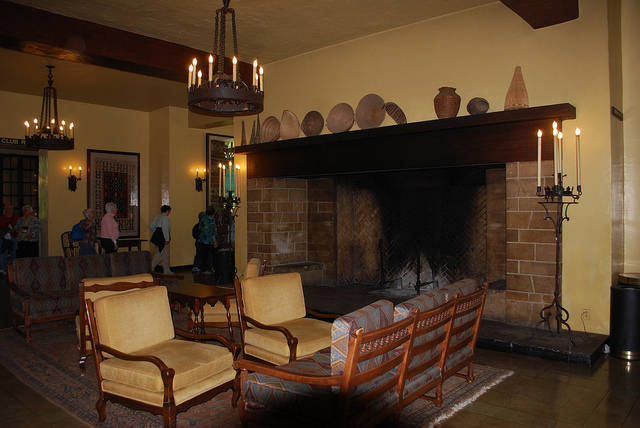
Ahwanee Fireplace by Paul Sullivan on Flickr (licensed CC-BY-ND)
The solution is simply to remove the lens hood when using your camera's pop-up flash. Or use a speedlight flash - because it is taller it will fire the flash over the lens hood, avoiding the problem. A speedlight flash can also be pointed at the wall or ceiling for using bounce flash, which will avoid the problem (and give more pleasing lighting).
Adding and removing a hood
Another potential problem with using a lens hood is if you like to put your camera away in a bag whenever you're not actually taking pictures with it. Because the hood adds length on the end of the lens, a bag that fits your camera and lens without hood may not fit it with the hood attached.
The vast majority of lens hoods included with lenses or sold as accessories have a bayonet type mount (as opposed to screw thread), and can be mounted reversed on the lens for storage. This solves the problem of fitting the lens into the bag. But it does mean that you have to detach the hood and re-attach it the right way round each time you get your camera out of your bag and want to use the hood. (And vice-versa each time you put the camera back in the bag).
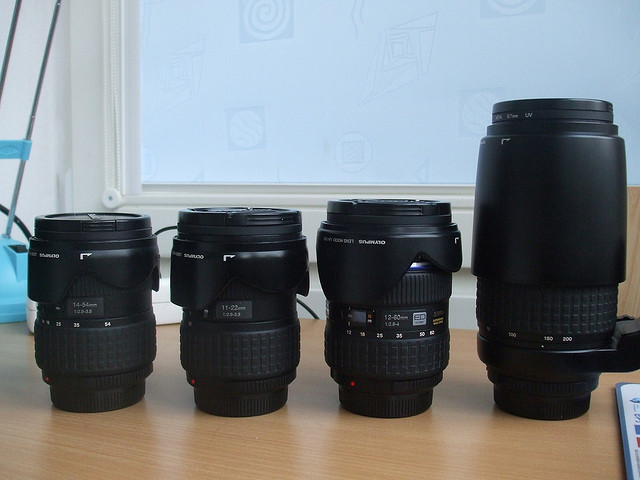
dscf8518 by tomasz przechlewski on Flickr (licensed CC-BY) - Lenses with hoods reversed for storage
Another advantage of the rubber lens hood comes into play here. Because a rubber hood is collapsible you can just collapse the hood when storing the camera, then expand it again when taking the camera out of the bag. It does still add a little length (and width) to the lens even when collapsed, but much less than a solid plastic hood.
Changing filters
Using lens filters can be a bit tricky when using a lens hood. With the hood attached, it can be quite difficult to get your fingers inside the hood to screw (or unscrew) a filter onto the lens. You may need to detach the hood each time you want to add or remove a filter.
The problem is even worse if you use oversized filters along with a step-up ring with your lens. Or if you use a filter holder system, such as those from Hitech and Lee. The filter would be too large to fit on the front of the lens at the same time as the lens hood.
In this case you would need to use a screw-in lens hood that can screw onto the front threads of the filter. Or with a filter holder system you can often purchase hoods designed for use with the system.
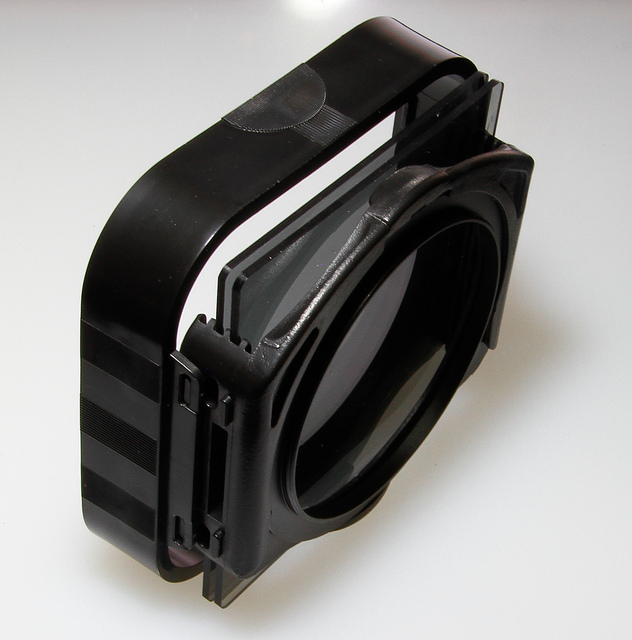
Cokin Type Square Filters by pulaw on Flickr (licensed CC-BY) - example of the Cokin filter holder with its lens hood attached
Makes your camera bigger
Adding a lens hood onto the end of your camera's lens makes it longer and more noticeable. Whether this is a problem or not is likely to depend on the type of photography you're doing. For subjects such as street photography, where being unobtrusive is better, then the extra size of the lens hood may draw more attention to you than you'd like.
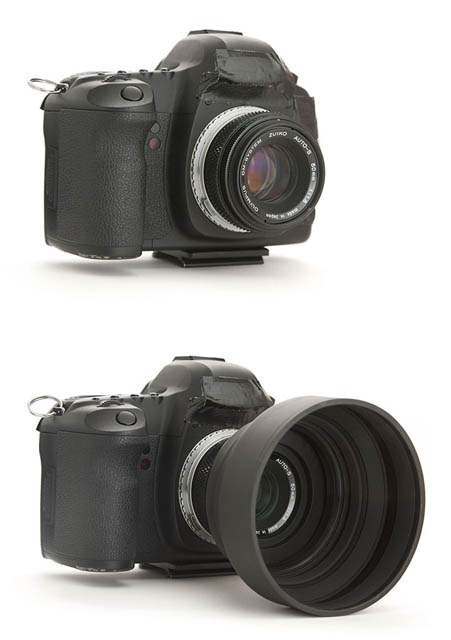
Adding a lens hood to a small lens can easily double the size of the lens
In a similar way, some people may see the use of a lens hood as being more 'professional'. If you're trying to impress, this could be a benefit. But if you're trying to take photos where 'professional' photography is not allowed or requires payment of a fee, then it could be more of a disadvantage.
To sum up, lens hoods can be very useful for preventing lens flare and protecting the front glass of your lens from bumps and scrapes. But on the other hand they can be annoying to use with filters and make your camera more noticeable. If you like to carry around your camera in a bag and just take it out whenever you want to use it, a lens hood can also be problematic.
So it can't be said that you should always use a lens hood. I would guess I use one probably around 20% of the time. But it's worth at least trying one to see how well it works for your photography and the way you like to work.
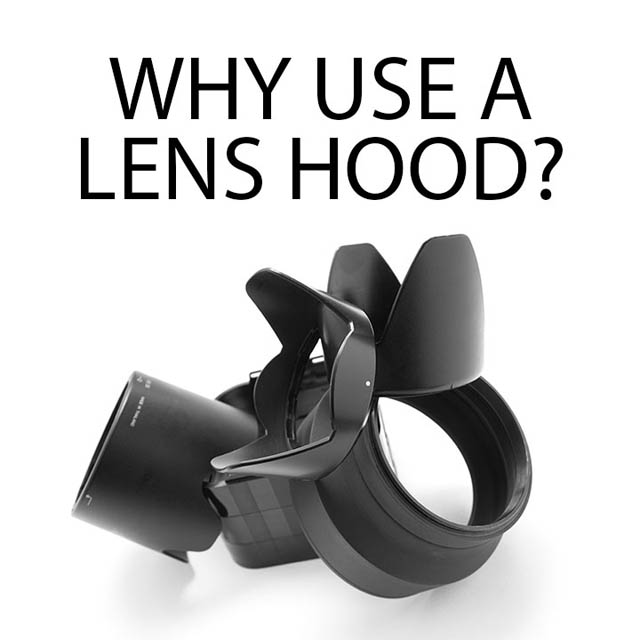





Very well written, explained and structured with a small introduction and conclusion and a little personal opinion at the end. Just love it
Thanks for the reminders and tips on lens hoods. I’ve been leaving mine backwards on the zoom lens with a UV filter in place, so light entering is a factor. 52 years ago, commercial work was a mix of color and b/w, so flare became more visible as color work grew. Weddings, news, and college were my mainstream, with testing of dip and dunk machines starting a career. All of us have things to share, and thanks to you for this one on lens hoods. My experience with a pocket-sized 14 megapixel Canon surprised me: It did everything a suitcase full of Hasselblads did 30 years ago! Photoshop is still mainstream for cleaning up images. Just the “rubber stamp tool” in “expert mode” does most of that. Thank you.
as the owner and photographer of the “Dinged” lens hood picture seen, may I point out that I’m a belt-and-suspenders kind’a guy and that lens ALSO has a filter on it?
I became a believer about using a lens hood when I tripped on a cobblestone street in Edinburgh and fell. My Nikon D90 was around my neck and all I could think about was destroying the camera when I hit the pavement. In this case, the lens hood absorbed the blow and prevented damage to the camera. My knee and shin took the brunt of the fall and the hood cracked (Easily replaced at a camera shop the next day). I leave it on most of the time when walking as a tourist.
Well written without the confusing jargon some experts love to use. I now understand why the “Petal” shaped hood is designed in that way, it was explained in plain easy to understand language. Thank you.
This is a well-written and illustrated article. You have dealt nicely with one of my pet peeves.
I have seen so many people travelling with wonderful gear and leaving the lens hood on backwards. I have been tempted to step up and give them a lesson on the use and value of the lens hood, but hold my tongue since many people would consider it an intrusion.
A word of caution for Canon users, however. When I was giving a private DSLR lesson to a student the other day, I discovered that the starter zoom (18-55mm) that came with her Canon was poorly designed. It turned out that when the camera focused, it rotated the front element, twisting the lens hood with it. As you can guess, many of my student’s pictures had a shadow because the focusing action put the hood in the wrong orientation. It was the first time I ever told a person not to use a lens hood.
A handy bit of information to remember. As I am only a amateur who has a lot to learn, I find sites like this a wealth of information. Thanks for sharing this information.
The article was great, but this was the best commment as I am an amateur and was wanting to buy one. I only have the starter lense, so will be staying away from these hoods for a while. thankssss
Sometimes we know something but still it somehow occupies at our back side of the mind and we keep ignoring the same until we find ourselves in total mess.. This article saves us..
Wow great article… I just got my Canon T6 and was trying to use my petal hood yet kept getting dark corners and even noticed the hood twisting and thought… odd design or was I doing something wrong? Nice to know it wasnt me but a quirk.. so good to know thx
Thank you! Simple and to the point! well written, I really appreciate it, Im new to the “big kid” camera game and so many bloggers like to make it so difficult.
It is all I ever use to protect my lenses
I hardly ever take mine off. Great for all the reasons to use them as you said but I find they are also very good in keeping light rain or drizzle off the lens as well.
I am always amazed at what a difference small things can make in photography. I love my lens hoods. Even wrote about them in my blog at https://veronicajunephotography.com/3-reasons-why-you-need-to-use-a-lens-hood/
Thanks for the great post!
Awesome explanation! I’m an amateur and when ever I try to read articles on how to use what it’s like they are talking to experts and I then get confused and bored and give up! Thank you!
I’m a new bee I have a Cannon EOS Rebel SL1
Hope this is a good enough camera to start with?
I bought books to study for beginners. And my sister turned me on to different information sites on Pinterest
Thank you